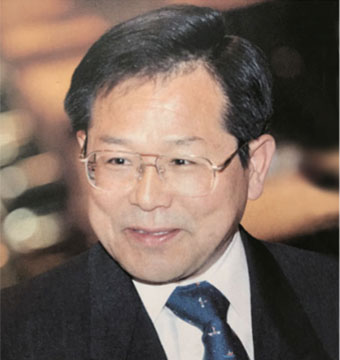Honorary Member

Dr. Shuzo Kato graduated from the Department of Electrical Engineering at Kitami Institute of Technology in March 1972, received Ph. D in Electrical and Communication Engineering from Tohoku University in March 1977, and joined Electrical Communication Laboratory of Nippon Telegraph and Telephone Public Corporation in the same year. He worked on research and development of satellite communications and PHS communications before retiring in 1995. Then, he started businesses in Japan and the United States in which he served as vice president and president. He became Program Director of the National Institute of Information and Communications Technology in 2006, and Professor at Research Institute of Electrical Communication at Tohoku University in 2008, and Professor Emeritus at Tohoku University in 2015. He is still committed to technology development for electronics, information and communications.
In the early 1980s, he developed the world’s first method for directly converting ASIC design data into FPGA design data to minimize reworking. This method became a precursor to the ASIC development method still in use today. Using this development method, he developed six types of general-purpose time division multiple access (TDMA) ASICs that can be applied to various types of TDMA equipment for satellite communications. These ASICs reduced the hardware size of TDMA equipment to about 1/5 that of conventional one and achieved highly stable operations. He thus opened the way for the application of satellite TDMA communication systems to domestic communication networks. In addition, he developed the world's first commercial 2V PHS baseband ASIC while halving power consumption. He invented coherent detection and a method for removing noise caused by digital speech errors, both world firsts in this field. Using these technologies, he developed an ASIC and a mobile terminal whose receiver sensitivity was 6 dB better than those of other companies' products (as of 1994). He provided these technologies to many companies, thereby contributing to the development of the PHS business.
To develop an IEEE standard for technologies created in Japan, he led the establishment of a consortium in 2006 of 21 institutes (including 20 Japanese institutes). Later, with overseas organizations participating, he managed 39 international institutes. The first standards formulated from start to finish under the leadership of a Japanese institute were completed in 2009. In this process, “common mode” that he proposed greatly contributed to avoiding conflict between two camps that had previously frequently occurred and delayed the process. It was adopted in many subsequent standards and speeded up standardization work. This success greatly improved the status of Japanese institutes and formed an important foundation for subsequent IEEE standards.
Within the IEICE, he contributed to constructing an electronic paper submission system and to halving the cost of paper submissions (as of 1995) in the capacity of director of Editorial and Publishing Affairs, and to establishing the Technical Committee on Short-Range Wireless Communications. In the international sphere, he served as an associate editor of the IEEE COMSOC Journal, chair of the Satellite and Space Communications Committee, and vice-chair of the 802.15.3c Standardization Committee of the IEEE Computer Society. In 1991, he co-founded PIMRC, an international conference on wireless communications. He oversaw its rise to become the world’s top international conference on wireless communications in terms of both the quality of its papers and the number of participants. He thus contributed to the promotion of global research and development. For these contributions, he received the Achievement Award, the Best Paper Award from the IEICE, the Satellite Communications Distinguished Service Award, and the Standard Association Award (three times including one on millimeter-wave communication) from the IEEE. In addition, he was designated as a fellow by the IEICE and the IEEE.
As mentioned above, he has borne an important responsibility in the IEICE, international academic societies, enterprises, and universities, and through his various activities, has made extremely remarkable contributions to operations of the IEICE, the development of science and technologies in the field of electronics, information and communications, fostering of younger generations, and revitalization of Japan. Hence, we are confident that he is well qualified to become an honorary member and we recommend that he be granted that status.